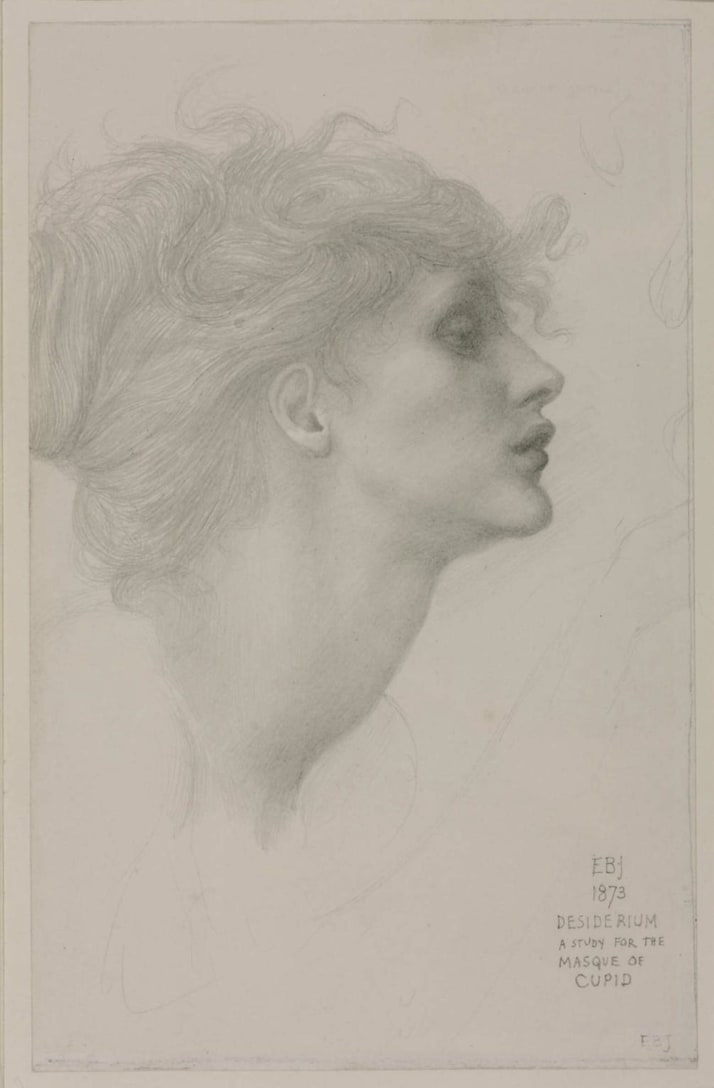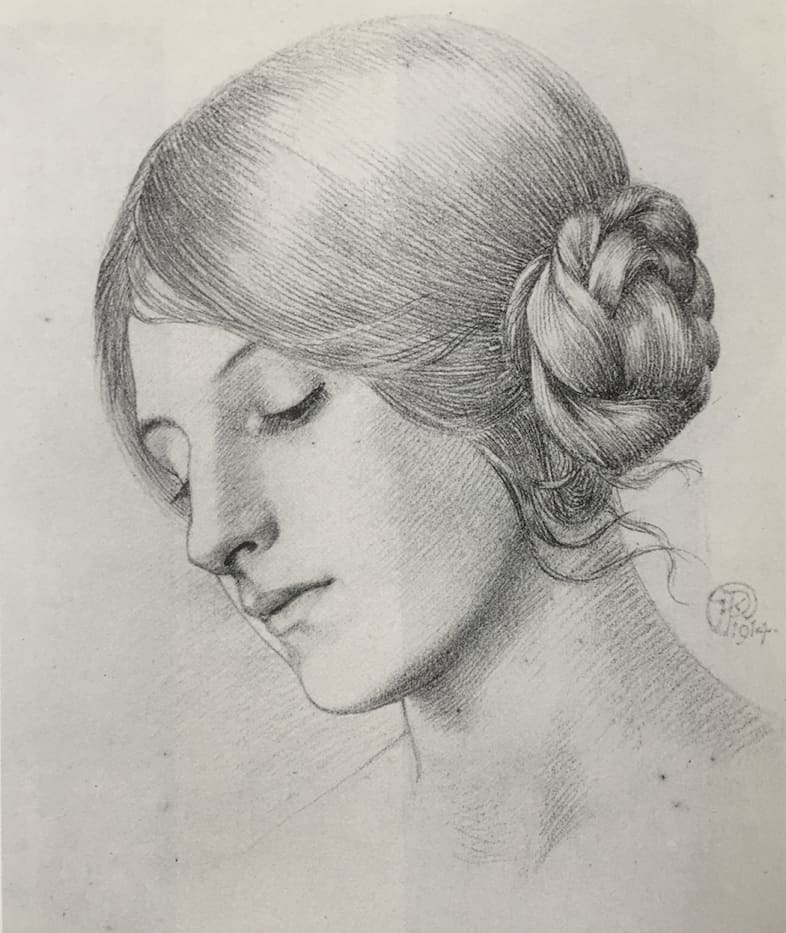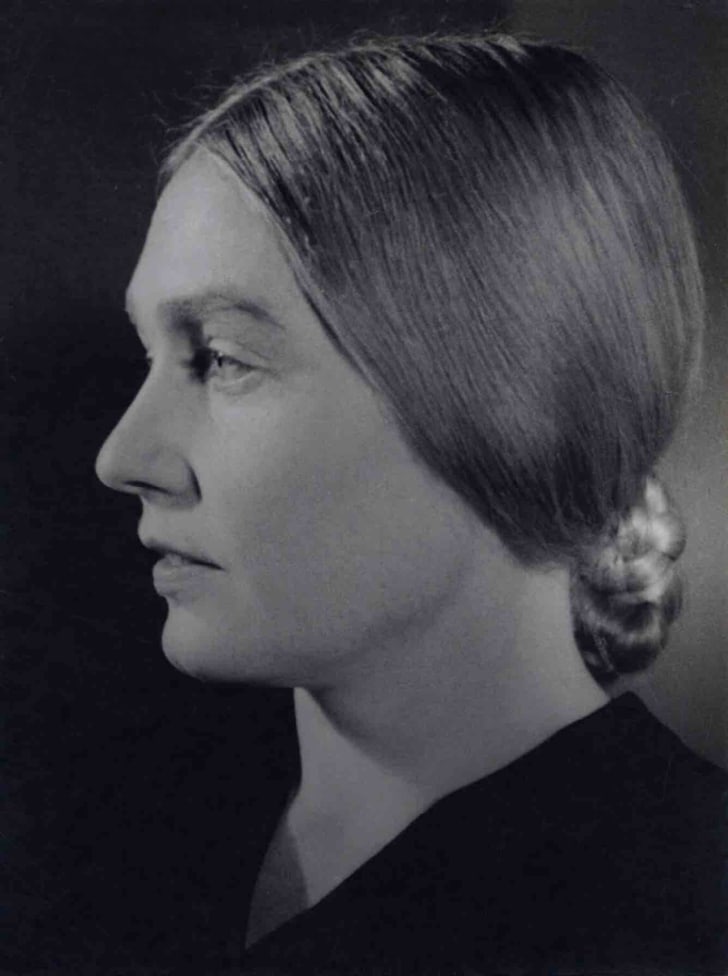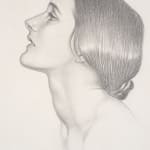Artworks
Karl Parsons (1884 – 1934)
Patricia
Monogrammed upper right and dated 1933
Pencil on paper
38 x 29.5 cm. (15 x 11 2/3 in.)
Patricia
Monogrammed upper right and dated 1933
Pencil on paper
38 x 29.5 cm. (15 x 11 2/3 in.)
One of Britain’s leading stained glass designers during the early decades of the 20th century, Karl Parsons ‘drew portraits, invariably for pleasure rather than as commissions, throughout his life, and it is in these that one sees most clearly the influence of some of the artists whom he most admired, notably Botticelli, Rossetti and Burne-Jones (fig. 1)’,[1] as is indeed evident in this elegant profile drawing entitled Patricia.

Fig. 1, Sir Edwin Coley Burne-Jones, Desiderium, pencil on
paper, 21 x 13.5 cm, Tate
Though harkening back to these illustrious forebears, both technically and compositionally, Patricia perfectly epitomises the type of portraiture fashionable in British high society during the 1920s and 1930s, typified by artists such as Gerald Leslie Brockhurst. In fact, Karl Parson’s technique here, with delicate shading and strong outlines, is close to Brockhurst’s graphic style, as a portrait of the latter’s wife, Anais, attests . Clearly, as attested by many of his other female portraits (fig. 2), Parsons took delight in demonstrating his skill at depicting the light shimmering across the strands of hair, and sculpting hard volumes through gentle shading.

Fig. 3, Karl Parsons, Portrait of Dinah Berry, pencil on paper,
33 x 27 cm, Private Collection
Karl Parsons career was devoted to stained glass, becoming in 1899 a pupil-apprentice of Christopher Wall, the leading Arts and Crafts’s proponent of this medium. Parsons was a gifted student, from the outset collaborating on major commissions, such as that for Gloucester Cathedral. By 1910, Parsons had set up his own studio, and would undertake several more significant commissions, including for the windows of Canterbury, Cape Town and Johannesburg cathedrals.
The sitter is very likely to be Patricia Frances, Lady Strauss. A photograph of her from the late 1930s or early 1940s displays striking physiognomic similarities, as well the same hairstyle (fig. 4), with her plat wrapped behind the neck. Born in 1909 to an Irish merchant, Patricia was an author and politician, standing unsuccessfully for the Labour Party in Kensington South at the 1945 General Election. She wrote biographies on Aneurin Bevan and Stafford Cripps and served as a war correspondent with the New York Herald Tribune. Patricia was a significant patron of both the performing and the visual arts. She led a campaign to persuade the government to use half a percent of the cost of all new buildings for works of art and pioneered the first international sculpture exhibition in Battersea Park. Patricia married George Strauss, MP, in 1932, becoming Lady Strauss in 1979.

Fig. 3, Bert Sachsel, Patricia Frances, Lady Strauss,
vintage print, 16.5 x 12.5 cm, National Portrait Gallery
[1] Karl Parsons, 1884-1934: Stained Glass Artist, exhibition catalogue, William Morris Gallery, London, 1987, p. 9, cat. no. 8.



